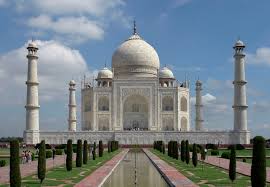The Taj Mahal: A Testament to Love and Architecture

Introduction
The Taj Mahal, a UNESCO World Heritage Site, is not only one of the most recognisable landmarks in India but also a profound symbol of love and devotion. Built as a mausoleum for Mumtaz Mahal, the beloved wife of the Mughal Emperor Shah Jahan, the Taj Mahal’s exquisite architecture and intricate artistry attract millions of visitors annually. Its relevance in discussions about cultural heritage and architectural accomplishment makes it a pivotal subject for both tourists and scholars alike.
The Historical Context
Construction of the Taj Mahal began in 1632 and was completed in 1653, involving more than 20,000 artisans and craftsmen from across the empire. The monument is renowned for its stunning white marble, which appears to change colour throughout the day depending on the sunlight. The mausoleum is set within a 17-hectare complex that includes beautifully landscaped gardens, reflective pools, and impressive gateways, all of which enhance its visual appeal and cultural significance.
Architectural Details
The design of the Taj Mahal incorporates elements from Persian, Islamic, and Indian architectural styles. Its symmetrical layout, structural precision, and intricate inlay work with semi-precious stones exemplify the pinnacle of Mughal architecture. The main dome rises to 35 metres and is flanked by four smaller domes, adding to its graceful silhouette. The craftsmanship visible in the calligraphy and floral motifs highlights the artisanship of the era.
Current Events and Preservation Efforts
Recently, the Taj Mahal has faced challenges related to pollution and degradation, prompting extensive restoration projects aimed at preserving its beauty for future generations. Efforts coordinated by the Archaeological Survey of India have focused on cleaning the marble facade and controlling the environmental factors threatening the structure. Initiatives to manage tourist foot traffic and promote awareness about the monument’s fragility are also in place, addressing the need for sustainable tourism.
Conclusion
The Taj Mahal remains a cultural icon and an enduring symbol of love, drawing attention to the importance of heritage conservation in a rapidly changing world. As it continues to inspire countless visitors, ongoing preservation efforts are vital to maintain the site’s integrity. The monument not only highlights the artistic achievements of its time but also stands as a reminder of the emotional narratives that shape human history. As global and local initiatives work toward sustainable tourism, the future of the Taj Mahal and its ability to enthral generations to come seems promising, underscoring its significance as a cherished world landmark.


